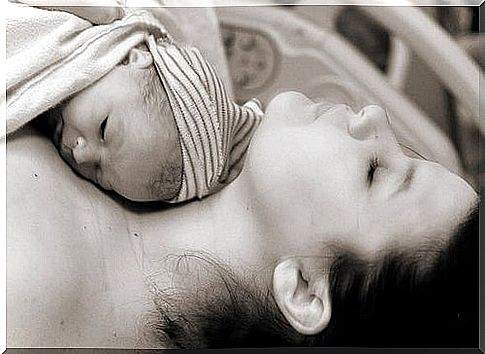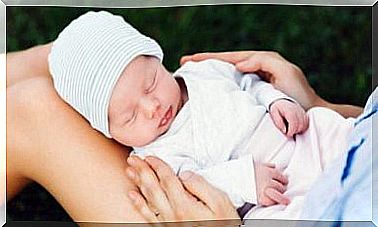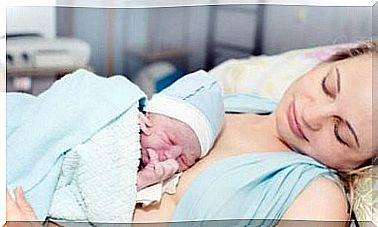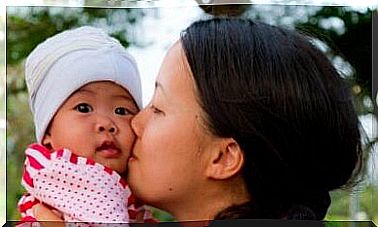The Skin-to-skin Contact Of Mother And Child

When a mother’s skin meets her baby’s for the first time, the spark goes off. This contact must occur as soon as the baby leaves the mother’s womb and must be prolonged on a regular basis and, if possible, throughout life. The benefit of mother and baby skin-to-skin contact is manifested in both ways, and in many ways. Among all, it makes the baby safe and also stimulates the production of breast milk.
It seems that, little by little, humanity understands – and with an ever deeper awareness – that nature is wise. When we come into the world, nature gives us everything we need: we just have to take advantage of the experiences that life offers us to learn to love. Motherhood is one of those experiences that teach women to love unconditionally.
When a mother takes her baby in her arms, she learns a form of love that is consumed skin to skin. It comes from there, from the union of your flesh with that of your partner. And it will be thanks to this heat that you will find that a newborn is able to crawl on his mother’s chest like a small worm to find her chest and start feeding.
This is an activity driven by his survival instinct. Through it, she can not only feed on the food provided by her mother’s breast, but she also receives the warmth and “attachment” she needs to grow healthily.

Skin-to-skin contact is miraculous
Skin-to-skin contact, beyond the implied romance that comes from its name, is a medical procedure in all respects. After birth, in fact, the newborn is placed naked and face down on the mother’s chest. It is at that moment that every mother discovers that her child is able to crawl on her body, recognize her chest, find the breast and suck properly.
The baby should be kept like this for at least the first 50 minutes of life (this could last up to 120 minutes, when the baby is usually alert). To promote this skin-to-skin contact, it is necessary to avoid ordinary separation after the baby is born, a modern practice that far from favoring the baby, interrupts the first contact with the mother and prevents him from perceiving her smell and heat.
Conversely, when this practice is promoted, the child is encouraged to develop his senses and instincts. In turn, the mother’s body responds positively to skin-to-skin contact: it reduces the risk of feeling anxious because she doesn’t know where the baby is, but also breast pain and postpartum bleeding.

Skin-to-skin contact releases oxytocin
Skin-to-skin contact is a powerful stimulant that releases a substance, maternal oxytocin, which in turn produces an increase in the skin temperature of the breast and warms the baby. In addition, this oxytocin counteracts the fight / flight effect, which reduces maternal anxiety and increases tranquility and social receptivity.
During the first few hours after birth, oxytocin can also stimulate parenting behaviors. Its effect is also beneficial for the initiation of breastfeeding: in fact, skin-to-skin contact favors the mother-child bond, decreases the baby’s crying and improves blood glucose levels and cardio respiratory stability.
For many years, the first skin-to-skin contact between mother and child was disrupted by hospital routines. Fortunately, in recent years this ancestral practice aimed at preserving such a special and unrepeatable moment has been encouraged, favoring the interaction between the newborn and his mother.
A love that arises spontaneously
This love – as true love is – arises spontaneously without forcing and is not a question of fashion. Prominent studies show that these implications affect the mother-child bond, but more importantly, they affect the physical and emotional development of the future adult. A mother and a newborn are one and a newborn’s normal environment is next to his mother, and no one else.
Skin-to-skin contact can be done professionally, ensuring that the baby and mother remain clean after delivery. Of course, it can be done without separating the baby from the mother.









